The construction of the first baths in Iran dates back to 3000 years ago and it seems that the first bath in history was built by Jamshid, the pre-eminent king of Iran. That’s how sounds amazing when we talk about the history of the Iranian traditional bathhouse (Hammam).
The baths also to some extent reflected the social status of the people; Wealthy people had their own private baths in their homes, and middle- or lower-class people went to public baths for bathing. It is also necessary to mention that the baths in Iran and, of course, in Islamic countries, were divided into two parts for men and women.
Persian Traditional bathhouse is known as Iranian hammam is a place for washing the body, cupping, traditional massage, herbal medicines, etc. in addition to being a place for washing and the things mentioned, public hammams were also a place for people to gather, talk, smoke hookah and drink tea!
Below you can find the 8 best traditional bathhouses in Iran. Although most of them have been converted to museums and teahouses, some of them still is operating and you can purchase a ticket and have an amazing experience in the Iranian hammam.
Top Iranian Traditional Hammam
- Hammam Sultan Amir Ahmad, Kashan – Persian Hammam
- Hammam-e Ali Gholi Agha, Isfahan
- Bab Homayoun Traditional Bathhouse, Tehran
- Khan Bathhouse, Yazd – Iranian Traditional Bathhouse
- Qazi Persian Bathhouse, Isfahan
- Hammam e Vakil, Shiraz
- Qajar Bathhouse, Qazvin
- Historical Bathhouses, Kerman
- Fin Bathhouse, Kashan – Iranian Traditional Bathhouse
Hammam Sultan Amir Ahmad, Kashan – Persian Hammam
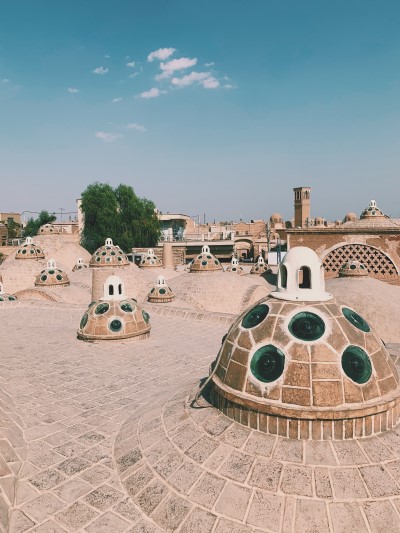
Sultan Amir Ahmad Bathhouse, located in the middle of the historical sight of Kashan and surrounded by the most famous Kashan sightseeing places like Agha Bozorg Mosque, Kashan Traditional houses and etc.
The hammam was built during the Safavid Dynasty in the 16th century, is divided into two sections: the dressing hall and the bathing hall. The inside is decorated with turquoise and gold tiles, plasterwork, bricks, and frescoes, and several gilded glass domes not only offer light but also add to the excitement, as a walk on the rooftop makes them appear as if space pods have landed in Kashan.
After the renovation, this hammam turned into the traditional teahouse for some time until it was finally turned into a museum.
Hammam-e Ali Gholi Agha, Isfahan
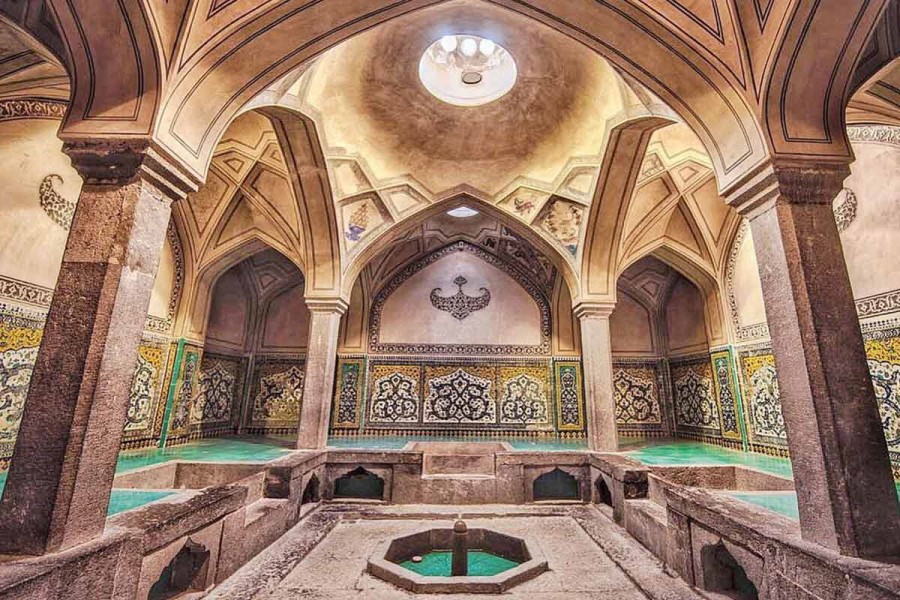
Hammam-e Ali Gholi Agha, another of Iran’s magnificent bathhouses, follows Esfahan’s attention to symmetrical detail and colorful tiles. The bottom half of the walls are covered with tiles typical of Esfahan’s big mosques, while the upper half is mostly covered in Persian miniature murals. Mannequins show what each area was used for in the past.
The complex consisting of a bathhouse, mosque and bazaar dating back to the Safavid era. The operating time is weekdays by 6 pm and their address is Isfahan Province, Isfahan, Bid Abadi St, Iran.
Read also: Best Iran deserts for safari
Bab Homayoun Traditional Bathhouse, Tehran
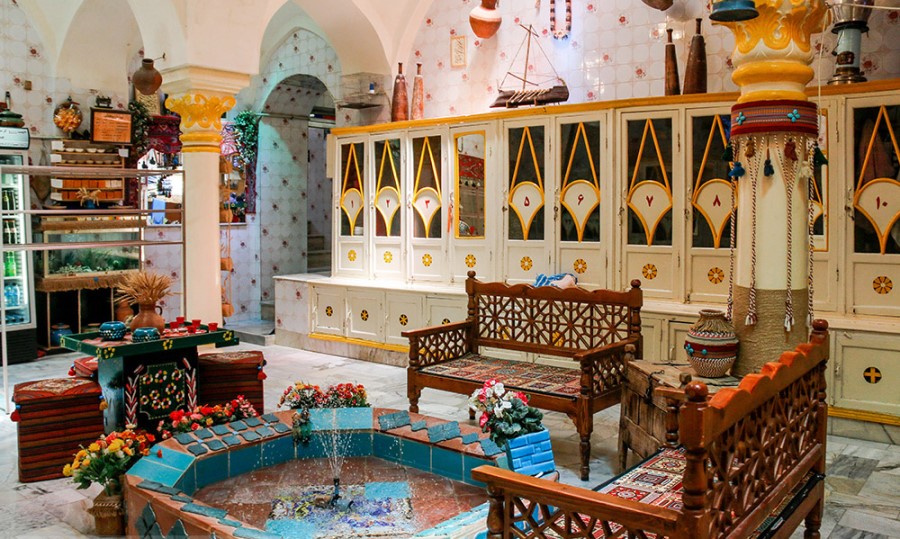
Bab Homayoun traditional bath, which is located in one of the old neighborhoods near Tehran Bazaar, is one of the few baths that has been able to continue its activities with the same old shape and appearance.
Bab Homayoun traditional bath is one of the Qajar baths in Tehran with more than 300 years old. This bath was once the location of some famous and old films of Iranian cinema and witnessed the presence of the greats of Iranian cinema.
Bab Homayoun bath has an area of more than one thousand square meters, which is about 20 steps lower than the floor of Tehran Bazaar, and its water was supplied from a Qanat (well) named Haj Alireza.
Khan Bathhouse, Yazd – Iranian Traditional Bathhouse
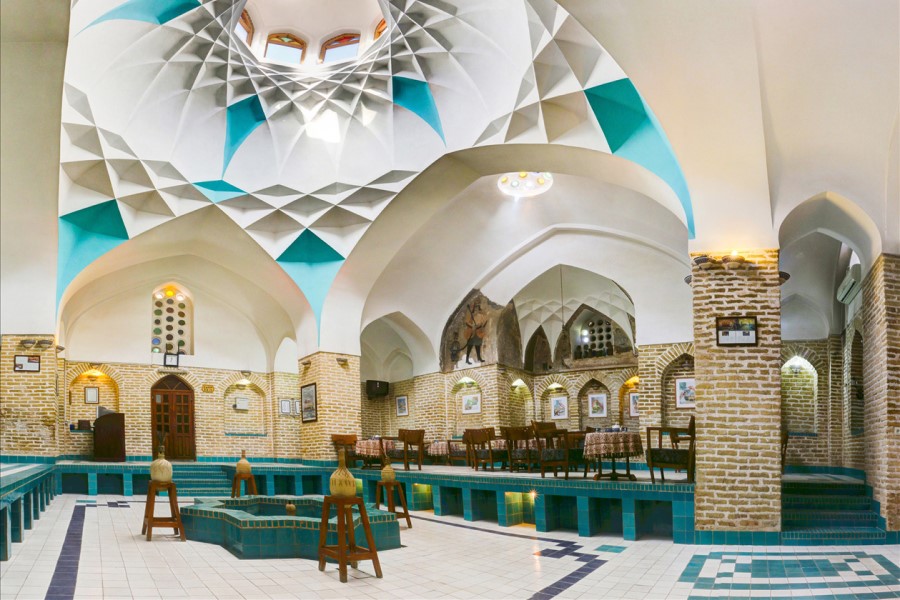
Khan Bath is one of Iran’s most well-known baths. It is created in a basic and welcoming manner that appeals to all tourists. It was constructed in 1797. The bath is divided by several sections, including Shah Neshin, Khazine, and others.
The architectural design of Naser al-Din Shah Qajar Era has been preserved. Khan Bath has three entry points: Khan Square, Kashigari Bazaar, and the residential area of the city.
Khan Bath is now a traditional restaurant and one of Yazd’s most popular tourist attractions. The structure and architecture are fantastic. You may also enjoy delicious Iranian foods such as Dizi.
Read also: Top 5 street food spots in Tehran, Iran
Qazi Persian Bathhouse, Isfahan

Qazi Hammam in Isfahan is among those few traditional ones which are renovated and used to provide the fans with a unique experience. The Hammam is a museum by itself letting you be soaped, scrubbed and massaged in the way ancient Persians used to be.
Getting yourself washed and cleaned in a traditional Persian style, will remove the whole fatigue and dirt away from your body.
During visiting this hammam, you will hear the long history behind the bathhouse culture of Iranians while visiting the aesthetic beauty of a historical one with all its special elements.
Hammam e Vakil, Shiraz
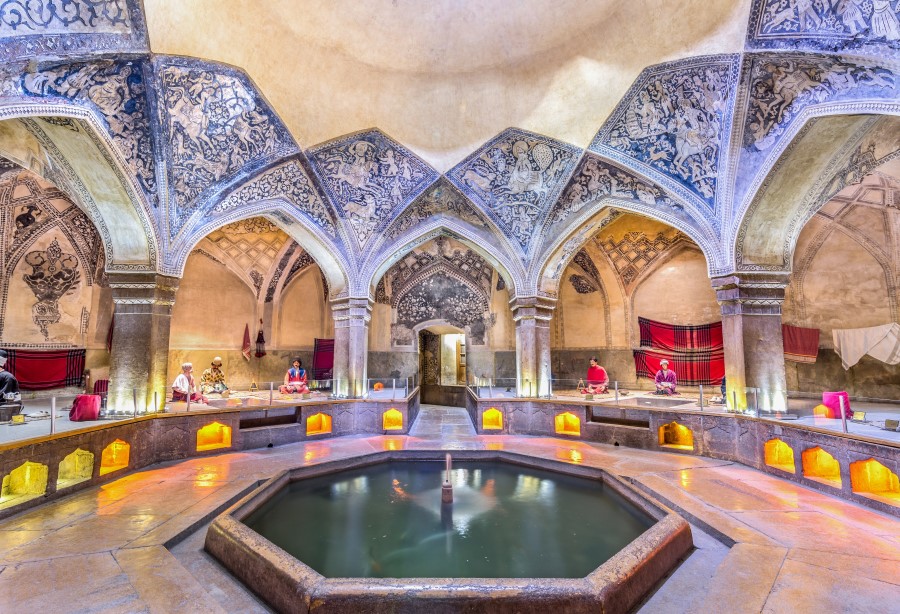
From the reign of Karim Khan Zand; Beautiful works and large collections are left in Shiraz. One of these buildings is called Vakil Bath, which was built by Karim Khan Zand in 18th century with an area of 11,000 square meters in the Darb-e-Shahzadeh neighborhood, currently Taleghani Street.
The bathroom is in the form of a cube and its entrance is located on the north side. Vakil Bath is known as very valuable in terms of architecture and aesthetics and has now been turned into a Carpet Museum of Iran by the Cultural Heritage Organization of Fars Province.
To be added that there is a similarity in name between Shiraz Vakil bathhouse and Kerman one. The origin of both names come from the “ Vakil ol Roaya “ the nickname of Zandiyeh famous king.
Qajar Bathhouse, Qazvin
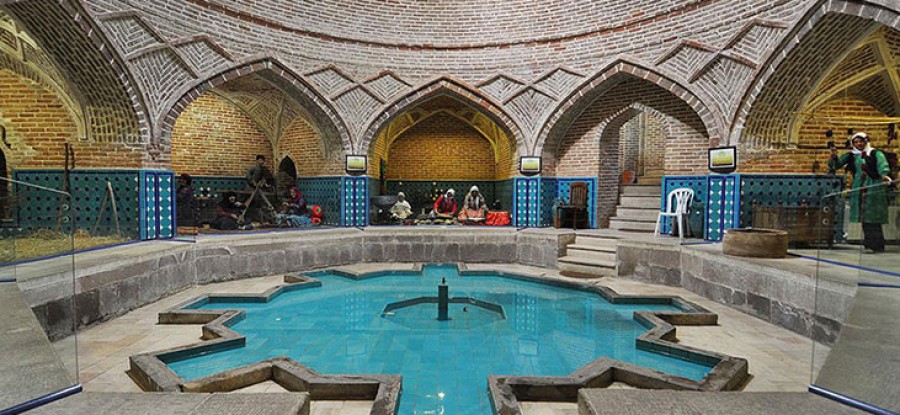
Qajar Bath is one of the oldest and biggest public bathes in Qazvin, which was built on the order of the Safavid ruler Shah Abbas (1571-1629) by one of his commanders. The Bath is located in a historic quarter of Qazvin. It is built primarily of brick and tile with separate domed changing areas and caldaria for men and women.
The bath was in almost complete ruin when the conservation began. Since its restoration it has been converted into a museum of traditional bath culture and tea shop.
Historical Bathhouses, Kerman

At Ganjali khan complex in Kerman, there are two traditional hammams. While the Ganjali Khan Bathhouse provides information on bathhouse history, the Vakil Bathhouse, which is part of the same complex, enables visitors to rest in one.
Vakil bathhouse in Kerman was converted to teahouse. The architecture of this bathhouse, with its beautiful archways and tiled walls, has been preserved, and exhibits of Pateh have been added (hand-stitched cloth from Kerman), and comfortable cushioned benches give the ideal setting for tourists to relax with a cup of hot tea while listening to live traditional music.
It’s also the finest spot in town to enjoy Kerman’s famed Kolompeh, which are biscuits packed with crushed walnuts and chopped dates.
Fin Bathhouse, Kashan – Iranian Traditional Bathhouse
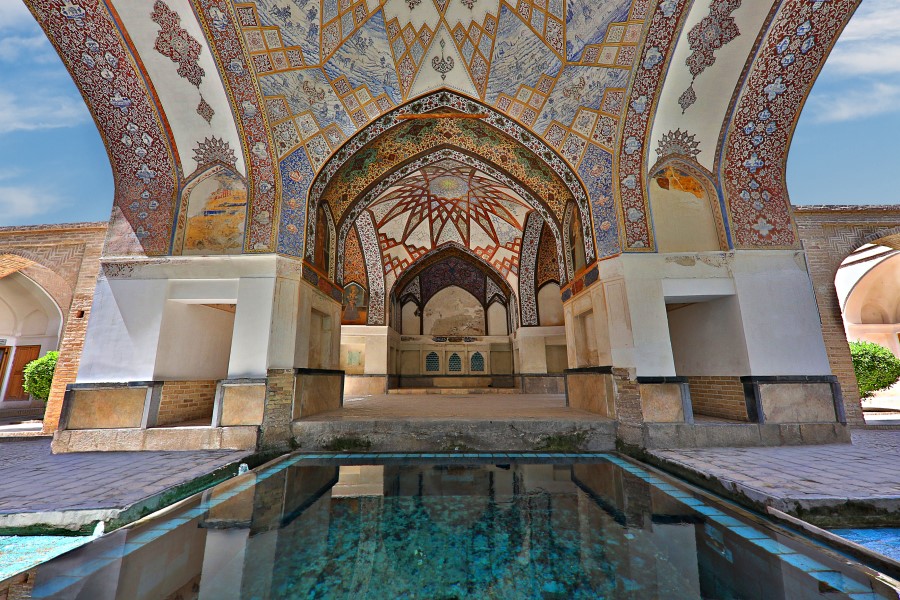
This historical hammam is located in Fin Garden one of the most beautiful complexes in Iran. You can experience visiting an outstanding Persian garden and historical bathhouse at the same time.
At a distance of 6 km south of Kashan, there is a green area with a pleasant climate, which in the past was known as the village of Little Fin, and according to the current divisions of Kashan, is located at the end of Amirkabir Street.
Among the historical buildings in Fin complex, a large bath and a small bath can be mentioned, which are located in the southern part of Fin Garden and are considered as the most important sights of Kashan.

